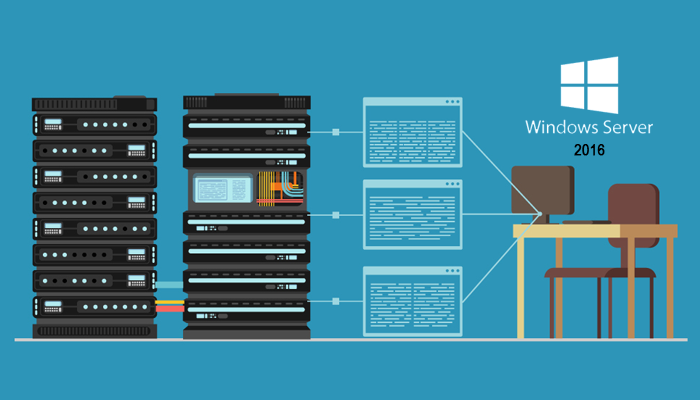Introduction
This is top class certification exam of Microsoft. It is designed by group of Microsoft advanced level official certification experts. It has covered all the aspects of depth in the technical questions and delivery methodology of official Microsoft certification by following the complete exam syllabus. This certification questions will give you the most realistic experience in the real world exam.
Exam Details:
This Exam contains multiple choices, multi selection and true or false questions.
Exam Time Limit: 90 Minutes
Exam Syllabus:
Install
Windows Servers in Host and Compute Environments
- Install,
upgrade, and migrate servers and workloads
·
Determine Windows Server 2016 installation requirements; determine
appropriate Windows Server 2016 editions per workloads; install Windows Server
2016; install Windows Server 2016 features and roles; install and configure
Windows Server Core; manage Windows Server Core installations using Windows PowerShell,
command line, and remote management capabilities; implement Windows PowerShell
Desired State Configuration (DSC) to install and maintain integrity of
installed environments; perform upgrades and migrations of servers and core
workloads from Windows Server 2008 and Windows Server 2012 to Windows Server
2016; determine the appropriate activation model for server installation, such
as Automatic Virtual Machine Activation (AVMA), Key Management Service (KMS),
and Active Directory-based Activation
- Create,
manage, and maintain images for deployment
·
Plan for Windows Server virtualization; assess virtualization
workloads using the Microsoft Assessment and Planning (MAP) Toolkit; determine
considerations for deploying workloads into virtualized environments; update
images with patches, hotfixes, last cumulative updates and drivers; install
roles and features in offline images; manage and maintain Windows Server Core,
Nano Server images, and VHDs using Windows PowerShell
Implement Storage Solutions
- Implement
server storage
·
Configure storage pools; implement simple, mirror, and parity
storage layout options for disks or enclosures; expand storage pools; configure
Tiered Storage; configure iSCSI target and initiator; configure iSNS; configure
Datacenter Bridging (DCB); configure Multi-Path IO (MPIO); determine usage
scenarios for Storage Replica; implement Storage Replica for server-to-server,
cluster-to-cluster, and stretch cluster scenarios
- Implement
data deduplication
·
Implement and configure Deduplication; determine appropriate usage
scenarios for Deduplication; monitor Deduplication; implement a backup and
restore solution with Deduplication
Implement Hyper-V
- Install
and configure Hyper-V
·
Determine hardware and compatibility requirements for installing
Hyper-V; install Hyper-V; install management tools; upgrade from existing
versions of Hyper-V; delegate virtual machine management; perform remote
management of Hyper-V hosts; using Windows PowerShell Direct; implement nested
virtualization
- Configure
virtual machine (VM) settings
·
Add or remove memory in a running VM; configure dynamic memory;
configure Non-Uniform Memory Access (NUMA) support; configure smart paging;
configure Resource Metering; manage Integration Services; create and configure
Generation 1 and 2 VMs and determine appropriate usage scenarios; implement
enhanced session mode; create Linux and FreeBSD VMs; install and configure
Linux Integration Services (LIS); install and configure FreeBSD Integration
Services (BIS); implement Secure Boot for Windows and Linux environments; move
and convert VMs from previous versions of Hyper-V to Windows Server 2016
Hyper-V; export and import VMs; implement Discrete Device Assignment (DDA),
Troubleshoot VM configuration versions
- Configure
Hyper-V storage
·
Create VHDs and VHDX files using Hyper-V Manager; create shared
VHDX files; configure differencing disks; modify virtual hard disks; configure
pass-through disks; resize a virtual hard disk; manage checkpoints; implement
production checkpoints; implement a virtual Fibre Channel adapter; configure
storage Quality of Service (QoS)
- Configure
Hyper-V networking
·
Add and remove virtual network interface cards (vNICs); configure
Hyper-V virtual switches; optimize network performance; configure MAC
addresses; configure network isolation; configure synthetic and legacy virtual
network adapters; configure NIC teaming in VMs; configure virtual machine queue
(VMQ); enable Remote Direct Memory Access (RDMA) on network adapters bound to a
Hyper-V virtual switch using Switch Embedded Teaming (SET); configure Bandwidth
Management
Implement Windows Containers
- Deploy
Windows containers
·
Determine installation requirements and appropriate scenarios for
Windows Containers; install and configure Windows Server container host in
physical or virtualized environments; install and configure Windows Server
container host; configure Docker start-up options; install a base container
image; tag an image; remove a container; create Windows Server containers;
create Hyper-V containers
- Manage
Windows containers
·
Manage Windows containers by using Docker CLI ; manage container
networking; manage container data volumes; manage Resource Control; create new
container images using Dockerfile; manage container images using DockerHub
repository for public and private scenarios; manage container images using
Microsoft Azure
Implement High Availability
- Implement
high availability and disaster recovery options in Hyper-V
·
Implement Hyper-V Replica; implement Live Migration including
shared nothing Live Migration; configure CredSSP or Kerberos authentication
protocol for Live Migration; implement storage migration
- Implement
failover clustering
·
Implement Workgroup, Single, and Multi Domain clusters; configure
quorum; configure cluster networking; restore single node or cluster
configuration; configure cluster storage; implement Cluster-Aware Updating;
implement Cluster Operating System Rolling Upgrade; configure and optimize
cluster shared volumes (CSVs); configure clusters without network names;
implement Scale-Out File Server (SoFS); determine different scenarios for the
use of SoFS vs. File Server for general use; determine usage scenarios for
implementing guest clustering; implement a Clustered Storage Spaces solution
using Shared SAS storage enclosures; implement Storage Replica; implement Cloud
Witness; implement VM resiliency; implement shared VHDX as a storage solution
for guest clusters
- Implement
Storage Spaces Direct
·
Determine scenario requirements for implementing Storage Spaces
Direct; enable Storage Spaces Direct using Windows PowerShell; implement a
disaggregated Storage Spaces Direct scenario; implement a hyper-converged
Storage Spaces Direct scenario
- Manage
failover clustering
·
Configure role-specific settings, including continuously available
shares; configure VM monitoring; configure failover and preference settings;
implement stretch and site-aware failover clusters; enable and configure node
fairness
- Manage
VM movement in clustered nodes
·
Perform live migration; perform quick migration; perform storage
migration; import, export, and copy VMs; configure VM network health
protection; configure drain on shutdown
Implement Domain Name System
(DNS)
- Install
and configure DNS servers
·
Determine DNS installation requirements; determine supported DNS
deployment scenarios on Nano Server; install DNS; configure forwarders; configure
Root Hints; configure delegation; implement DNS policies; Configure DNS Server
settings using Windows PowerShell; configure Domain Name System Security
Extensions (DNSSEC); configure DNS Socket Pool; configure cache locking; enable
Response Rate Limiting; configure DNS-based Authentication of Named Entities
(DANE); configure DNS logging; configure delegated administration; configure
recursion settings; implement DNS performance tuning; configure global settings
- Implement
and Maintain IP Address Management (IPAM)
·
Provision IPAM manually or by using Group Policy; configure server
discovery; create and manage IP blocks and ranges; monitor utilization of IP
address space; migrate existing workloads to IPAM; configure IPAM database
storage using SQL Server; determine scenarios for using IPAM with System Center
Virtual Machine Manager for physical and virtual IP address space management;
manage DHCP server properties using IPAM; configure DHCP scopes and options;
configure DHCP policies and failover; manage DNS server properties using IPAM;
manage DNS zones and records; manage DNS and DHCP servers in multiple Active
Directory forests; delegate administration for DNS and DHCP using role-based
access control (RBAC); audit the changes performed on the DNS and DHCP servers;
audit the IPAM address usage trail; audit DHCP lease events and user logon
events
Implement Network Connectivity
and Remote Access Solutions
- Implement
virtual private network (VPN) and DirectAccess solutions
·
Implement remote access and site-to-site (S2S) VPN solutions using
remote access gateway; configure different VPN protocol options; configure
authentication options; configure VPN reconnect; create and configure connection
profiles; determine when to use remote access VPN and site-to-site VPN and
configure appropriate protocols; install and configure DirectAccess; implement
server requirements; implement client configuration; troubleshoot DirectAccess
Implement an Advanced Network
Infrastructure
- Implement
high performance network solutions
·
Implement NIC Teaming or the Switch Embedded Teaming (SET)
solution and identify when to use each; enable and configure Receive Side
Scaling (RSS); enable and configure network Quality of Service (QoS) with Data
Center Bridging (DCB); enable and configure SMB Direct on Remote Direct Memory
Access (RDMA) enabled network adapters; configure SMB Multichannel; enable and
configure virtual Receive Side Scaling (vRSS) on a Virtual Machine Queue (VMQ)
capable network adapter; enable and configure Virtual Machine Multi-Queue
(VMMQ); enable and configure Single-Root I/O Virtualization (SR-IOV) on a supported
network adapter
- Determine
scenarios and requirements for implementing Software Defined Networking
(SDN)
·
Determine deployment scenarios and network requirements for
deploying SDN; determine requirements and scenarios for implementing Hyper-V
Network Virtualization (HNV) using Network Virtualization Generic Route
Encapsulation (NVGRE) encapsulation or Virtual Extensible LAN (VXLAN)
encapsulation; determine scenarios for implementation of Software Load Balancer
(SLB) for North-South and East-West load balancing; determine implementation
scenarios for various types of Windows Server Gateways, including L3, GRE, and
S2S, and their use; determine requirements and scenarios for Datacenter
firewall policies and network security groups
Install and Configure Active
Directory Domain Services (AD DS)
- Install
and configure domain controllers
·
Install a new forest; add or remove a domain controller from a
domain; upgrade a domain controller; install AD DS on a Server Core
installation; install a domain controller from Install from Media (IFM);
resolve DNS SRV record registration issues; configure a global catalog server;
transfer and seize operations master roles; install and configure a read-only
domain controller (RODC); configure domain controller cloning
Implement identity federation
and access solutions
- Install
and configure Active Directory Federation Services (AD FS)
·
Upgrade and migrate previous AD FS workloads to Windows Server
2016; implement claims-based authentication, including Relying Party Trusts;
configure authentication policies; configure multi-factor authentication;
implement and configure device registration; integrate AD FS with Microsoft
Passport; configure for use with Microsoft Azure and Office 365; configure AD
FS to enable authentication of users stored in LDAP directories
- Implement
Web Application Proxy (WAP)
·
Install and configure WAP; implement WAP in pass-through mode;
implement WAP as AD FS proxy; integrate WAP with AD FS; configure AD FS
requirements; publish web apps via WAP; publish Remote Desktop Gateway
applications; configure HTTP to HTTPS redirects; configure internal and
external Fully Qualified Domain Names (FQDNs)
How this exam is useful to you?
This exam is intended for the people who are preparing for the 70-743 Upgrading Your Skills to MCSA Windows Server 2016 Certification. This exam is prepared exclusively as per the real certification exam. This will definitely help to check your skills before attempting the main exam. Also it will give the complete idea how main exam will be.
This exam will evaluate your skills and will give you report on how far you are skillful in 70-743 Upgrading Your Skills to MCSA Windows Server 20162 certification exam.
In case you face any issues during the exam or you have any queries, email us at [email protected]
Wish you all the best for your certification exam and we are always ready to help you to get certified and grow in your career.
-
Valentina
Suggest this Windows Server 2016 certification
-
Jankovic
Without you I would not have passed certification
-
Rehman
This Windows Server 2016 exam is really amazing very realistic
-
Altaf
Highest rated certification exam
-
Franco
In this Windows Server 2016 certification exam I have seen that this is absolutely perfect and realistic
-
Priyanka Agarwal
This is absolutely real time certification exam
-
Malcom
Remarkable
-
Ronda
Very very good experience of exam
-
Kane
Amazing place to write Windows Server 2016 certification exam
-
Zavier
Amazing exam
-
Diaz
This certification exam is very much real certification exam
-
Akthar
Very worthful
-
Preetam
After writing the Windows Server 2016 certification exam I'm giving this feedback
-
Ranjith
I have written Windows Server 2016 certification exam which is real
-
Maelys
Awesome
-
Mrinal
You helped me to pass
-
Urzen
This is the only place where you get the real Windows Server 2016 certification exam
-
Delly
Number one
-
Ryan
In Windows Server 2016 certification exam injecting 85 percentage is very tough
-
Nicole
The best exam I have ever seen
-
Nitin
You made me on top
-
Cheyun N.Y.
Ton Likes to Vullam
-
Juan
Great encouragement for exams
-
Sterre
Managed all the syllabus like in expert Windows Server 2016 certification
-
Tsingov
The data maintained in the Windows Server 2016 certification exam is very nice
-
Vivian
Free Windows Server 2016 certification exam
-
Bonder lens
Your team of Windows Server 2016 certification exam is very perfect
-
Priyanka
Understood everything some technical perspective
-
Charan Govind
Exam is very close to realistic certification exam
-
Vedant
There is a real time feeling in writing this certification
-
Amala
I have seen complete syllabus
-
Muntaha
All the standards of education exams are clearly in and managed
-
ghusan
Extarordinary exams
-
Govinda
100% satisfied
-
Rokhaya
5 stars
-
Ruets
I love this
-
Sureka
Suggest this Windows Server 2016 certification
-
Shabrina
Very important Windows Server 2016 certification exam
-
Niaz
Very responsible team
-
Mridul
Absolutely real time Windows Server 2016 certification exam
-
Chetan
Very well managed certification exam
-
S M
Out of all the places this is a real best place to write Windows Server 2016 certification exam
-
Neelam
You guys remove my fear fighting real Windows Server 2016 certification exam
-
Kishan
Vow
-
Suhasini
The best one of it's of exam experience
-
Dtsev
Highly productive place
-
Saba
All the questions are design with high priority of quality in Windows Server 2016 certification exam
-
Mubarak Shah
Place to be winners
Exam Details:
This Exam contains multiple choices, multi selection and true or false questions.
Exam Time Limit: 90 Minutes
Check the instructions before starting the exam:
Read the exam instructions carefully and follow them to avoid any issues while writing the exam.
· Check the exam time limit before you start the exam.
· It is highly recommended to have faster internet access.
· No power cut shall happen during the exam. Hence the power backup for your system/laptop.
· In case your system/laptop gets shut down abruptly due to power cut, internet connectivity issues or any other reasons, your exam will be ended and will be considered as one attempt completed.
· Exam browser window shall not be closed once exam starts otherwise exam will be ended abruptly and same with losing your attempt as well.
· While writing the exam, if you click on back button of the browser tab then your exam will be ended abruptly and attempt will be lost. Hence it is highly recommended not use to back button of the browser button while/after writing the exam.
· Once exam time is completed, exam will be submitted automatically. Hence it is recommended to keep checking the timer which will be available at the exam window.
In case you face any issues during the exam, please email us at [email protected]
Copy Rights:
These are exams are prepared exclusively by Vullam experts team. This is copy right content. Copying or distribution of any of the exam content will considered as the violation of the terms and conditions and strict action will be taken against him/her as per the law.
Once Exam Starts:
· Once you click on the Start the Exam button, your exam starts.
· Timer at the right side of the exam page indicates the time remaining.
· Use Previous Question or Next Question buttons only to go to previous question or to go next question respectively.
· You can also find the questions right side of the exam window where you can select the question which you wanted to answer first.
· Once all questions are answered, you can submit all the answers.
· If you do not submit all the answers, your exam will not be evaluated and you will lose the exam attempt.
· Even if exam time out is done, exam will be submitted automatically
Once after exam is submitted:
· Once exam is submitted, your result will be shown in the screen immediately.
· Result shows Pass/Fail along with the achieved score.
· In the result user can find the questions which were answered correct and wrong.
· Once exam is submitted, result will emailed to the registered email id of the user.
· If the result is Pass then user will get the certificate of the exam to their registered email id.
In case you face any issues during the exam or you have any queries, email us at [email protected]
Wish you all the best for your certification exam and we are always ready to help you to get certified and grow in your career.
You have not purchased/ subscribed this exam so no data available.
You have not purchased/ subscribed this exam so no data available.
Please subscribe to this exam to view the exam documents.
















































